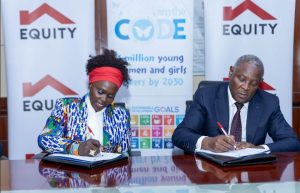By Rachel Irvine, CEO and Founder of Irvine Partners
For decades, South Africa has been stuck in the same exhausting loop: dig something valuable out of the ground, ship it overseas, then buy back the finished product at a markup. We’ve done it with coal, platinum, and iron ore. We’ve watched the margins walk out the door while we’re left with the holes in the ground and not nearly enough jobs to show for it.
But here’s what’s different about the energy transition: it might actually force us to break that pattern. China represents about 91% of global rare earth separation and refining production and is now tightening export licences on critical materials. Meanwhile, South Africa is sitting on some of the richest rare earth deposits outside China, particularly at Steenkampskraal. We’re also at the centre of southern Africa’s energy transition, courting battery, solar and EV investment.
The collision of these realities creates something we haven’t seen before: a genuine opportunity for local beneficiation that makes economic sense, not just policy sense.
I’ve been watching Chinese investment flows into Africa for years, and what’s happening now with battery materials is fundamentally different from previous commodity cycles. Chinese lithium battery firms like Ganfeng, Guoxuan and Tianci aren’t just buying ore anymore. They’re moving into battery material processing and cell production on the continent. Morocco is building Africa’s first battery gigafactory with $5.6 billion in Chinese investment. And in Zimbabwe, Zhejiang Huayou Cobalt is launching a lithium sulphate plant. These aren’t just mining operations. They’re processing facilities that capture 25 times more value than shipping raw ore. And crucially, Chinese firms have both the capital and the motivation to make it happen here.
Breaking the commodity trap
The South African government has floated plans for a Southern African battery manufacturing corridor, linking mineral supply from South Africa, Namibia, the DRC and Zambia to local processing and cell production. It’s ambitious, but here’s why it might actually work this time.
Batteries are too heavy and expensive to ship long distances economically. A 60 kWh EV battery weighs 400 kilograms. What gets me excited, and I don’t get excited about industrial policy easily, is that this basic physics means manufacturers will actually build plants close to where batteries are needed, not where it’s cheapest to exploit labour. For once, the economics favour us. We have the minerals in our backyard, we’re developing a massive regional market for energy storage, and Chinese firms need somewhere to put their overcapacity. That’s a rare alignment that could finally let us capture real manufacturing value instead of just digging and shipping.
Once you have battery cell manufacturing, it triggers everything upstream and downstream. You need cathode materials, anodes, separators, battery management systems. We’ve seen this work in the automotive industry.
BMW and Toyota assemble locally, and suddenly you have 200 component suppliers clustering around them. We could replicate this for batteries and EVs, leading to a significant growth in jobs. The jobs impact is significant with UNIDO research showing that each manufacturing job creates roughly 2.2 additional jobs across other sectors. Right now we export lithium spodumene at nearly $1,000 per tonne. Refine it to lithium hydroxide and you’re looking at around $25,000 per tonne. If we capture even 10% of sub-Saharan Africa’s battery demand by 2035, we’re looking at $4-5 billion in annual revenue unlocked and 15,000-20,000 direct jobs in the sector alone.
Turning coal decline into industrial opportunity
There’s also a compelling human dimension here. Mpumalanga’s coal belt employs over 90,000 people directly. As we phase out coal, and we must, we need to put something in its place that creates comparable employment in the same regions. Battery manufacturing could be that answer. Locate the plants in eMalahleni and the former coal heartland. Retrain coal miners and engineers for battery production. These communities have exactly the kind of industrial skills base and work ethic that battery manufacturing needs.
Germany did exactly this in the Lausitz region: closing coal mines, building EV battery plants with billions in state aid. We can follow the same playbook, and the $8.5 billion just transition financing for South Africa through the Just Energy Transition Partnership gives us the capital to do it. This isn’t about gaming the system. It’s about ensuring that the people who powered our economy for decades aren’t left behind as we transition to clean energy. And it happens to unlock concessional finance from development banks specifically designed for exactly this kind of transformation.
Chinese overcapacity meeting African ambition
Battery manufacturing is technically demanding. Western firms are protective of this intellectual property and aren’t rushing to transfer the technology. Chinese firms have cracked the code on battery manufacturing at scale and, crucially, they’re willing to share it. They’ve built the world’s most sophisticated battery supply chains and now they’re looking for strategic partners who can help them expand into new markets while diversifying away from geopolitical pressure. That’s a fundamentally different proposition than we’ve seen from Western manufacturers.
The model works as a joint venture: South African partner holds 51% to meet BEE requirements, Chinese firm holds 49% and provides the technology, equipment, training and process know-how. Morocco’s gigafactory with Gotion High-Tech is exactly this structure.
This isn’t charity or exploitation. It’s a genuine exchange of value where both sides capture something they need. Chinese firms get access to Africa’s mineral wealth and a growing regional market. South Africa gets technology transfer, manufacturing capacity and jobs. And the regional opportunity is massive. Twenty percent of sub-Saharan Africa still lacks electricity. South Africa’s grid had over 300 days of loadshedding in 2023. Every shopping centre, factory and mine needs battery energy storage systems.
Right now, South Africa imports 100% of its EV batteries and over 70% of its solar panels. Our energy transition is making us more dependent on imports, not less. Local battery manufacturing changes that equation entirely. The pieces are there. We have the minerals. Chinese firms have the capital and technology. Development banks have allocated billions. The Wucheng Group’s $35 million solar panel assembly deal with Nkangala is the template.
This is the once-in-a-generation opportunity to break the trap of being forever stuck digging up rocks for someone else to turn into valuable products. We just need the grit and resilience to actually execute. The question isn’t whether the Battery Belt can happen. It’s whether we have the audacity to make sure South Africa is the anchor.







More Stories
Opinion: Co-op Bank’s New Nyali Branch Shows Real Care for Customers
When Everyone Becomes a Digital Expert: The Rise of Ad Criticism Online
Banks Must Adopt New Service models to Stay Competitive